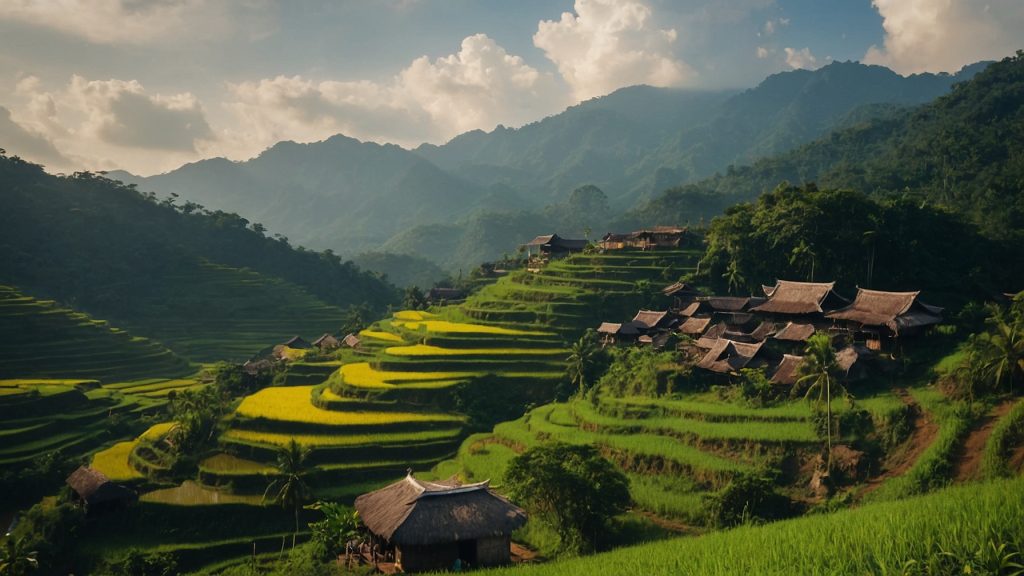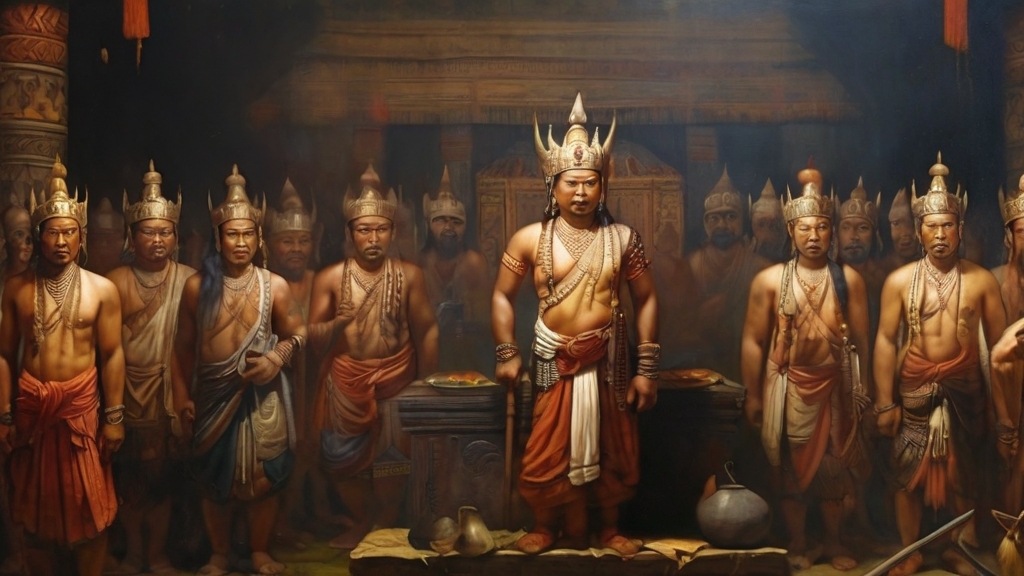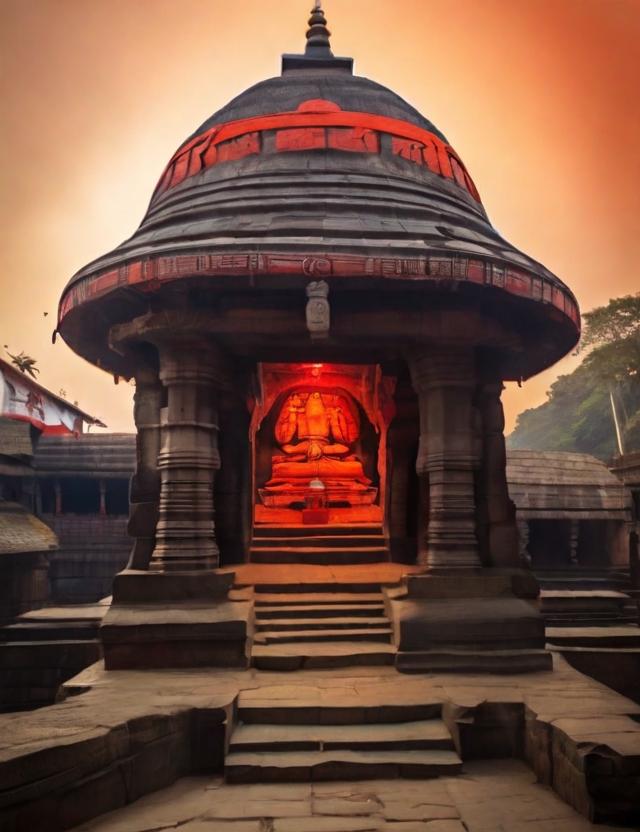Mayong, “the witch-craft capital of India.” There is an air of mystery surrounding Mayong, with tales of black magic, occult practices, and mysticism. Let me take you on a journey through the history of Mayong that is bound to make you question whether magic is real or fictional. As kids, we are fascinated with the realm of magic, the world of magic captivates young minds in a way that goes beyond mere imagination. I am sure many of us are fans of the Harry Potter movies, the magical world of Hogwarts brought to life by J.K Rowling, and yet it is purely fictional.

Mayong village, located in the Morigaon district of Assam
How about I tell you a story of a mysterious village located in India where the tales of sorcery and witchcraft are very much real? Sounds spooky right? Well, it’s a small village located in the Morigaon District of Assam, resting on the banks of the mighty river Brahmaputra river. This village is called Mayong also referred to as the “Land of Black Magic.” Wrapped in folklore and legends, this village has gained quite a reputation for its association with ancient practices of sorcery and witchcraft.
| Black magic commonly spelled kala jadu or dark arts in India has deep roots in historical and cultural factors. While the concept has existed since ancient times, it is important to note that there is a prevalent societal stance against its practice. While India has a rich cultural history that includes elements of mysticism, the general sentiment is to shun black magic due to its perceived negative impact on individuals and communities. |
On that note let’s dive into this mysterious enchanted village and explore its secrets, but first, let’s go back in time to know how this village gained its reputation.
HISTORY OF MAYONG
The name Mayong is derived from the Sanskrit word “Maya” meaning illusion. Others contend that it originates from the Dimasa language, where “Miyong” means “elephant.” The name is a reflection of the village’s reputation as a place where magical arts, spells, and illusions were not just practiced but were deeply ingrained in the cultural fabric of the community. It gained historical significance during the Ahom dynasty, a powerful dynasty in the north-eastern region of India. Its reign spanned nearly 600 years, which was one of the longest-ruling dynasties in India.

The Ahom dynasty, one of the longest-ruling dynasties in India
According to local legends, Mayong was believed to be a hub for practitioners of occult sciences during the Ahom rulers. The Ahom rulers were known for their patronage of the indigenous traditions and cultures of Assam, including aspects of local beliefs and practices. While they may not have been directly associated with black magic, the region, including Mayong village, gained a reputation for occult practices over the centuries. It is said that some Ahom rulers sought the assistance of local practitioners, including tantric and wizards, for matters related to protection, warfare, or governance.
DID YOU KNOW? There have been several incidents documented in history that earned Mayong its reputation as the “Land of the Occult.” It is said that during war times in the 1330s, Muhammad Shah’s 100,000 horsemen disappeared near Mayong due to black magic and warcraft, and not a single trace was left behind. In the year 1667, when the Mughal power was unmatched, Aurangzeb ordered the Mughal general Raja Ram Singh to subdue the Ahoms. Raja Ram Singh, with the entire might of the Mughal army behind him, approached this mission with apprehension.

Mirza Raja Ram Singh I was the Raja of the Kingdom of Amber and head of the Kachwaha Rajput clan
You might have questions about why Singh was filled with fear and apprehension. Was he afraid of the skilled Ahom army? Was he perhaps believed that the Ahom had better weapons and battle gear than the Mughals? What filled Singh with fear and dread was Assam’s affinity with magic and the fearsome tales that emerged from Mayong, the undisputed capital for all things other-worldly. Such was the might of Mayong. Unbelievable right?
KAMAKHYA TEMPLE: The central hub of worship in Mayong

The Kamakhya temple in Mayong has the oldest Shakti Peetha
Listen closely as I tell you the history of the Kamakhya Temple, believed to have been built by the Koch King Naranarayan, and known for its association with both Hindu spirituality and certain tantric practices. Located atop the Nilachal Hill in Guwahati, it is one of India’s oldest and most revered Shakti Peethas (holy places where the remains of Sati, Shiva’s wife, are said to be). This temple has ancient roots, and its history is deeply intertwined with Assam’s rich cultural and religious heritage. Some accounts trace its origins back over 2,500 years.
The temple is dedicated to Goddess Kamakhya, a manifestation of the Hindu goddess Shakti. According to legend, the temple stands on the spot where the yoni (reproductive organ) of the goddess fell after Lord Shiva danced with her corpse, bringing an end to the Daksha Yagna. The Kamakhya temple is linked with the concept of yoni (the divine feminine) and is a Shakti Peetha, making it a focal point for those interested in tantric rituals associated with the worship of the goddess’s creative energy. The practice of Narbali– human sacrifice stands out. In rituals dedicated to Goddess Shakti, humans were offered sacrifices to attain potent black magic abilities. Recent excavations have unearthed ancient swords used for this macabre purpose.
The Kamakhya temple is known for its association with tantric practices. It is a significant center for tantric worship, drawing practitioners from various parts of the country involving rituals, mantras, and esoteric knowledge. The broader Kamakhya area, including Mayong, has folklore and stories about practitioners who were believed to possess knowledge of occult arts, including magic. These practices were sometimes sought for various purposes, such as protection, healing, or influence.
Discover the evidence of black magic at the MAYONG MUSEUM
 The Mayong Central Museum and Emporium in Guwahati was opened at Mayong by the government in 2002. Here, visitors get a taste of the real Mayong – not silly fables of ghosts and babas – but a look at the actual remains of the black magic that has been a part of Mayong’s culture for centuries.
The Mayong Central Museum and Emporium in Guwahati was opened at Mayong by the government in 2002. Here, visitors get a taste of the real Mayong – not silly fables of ghosts and babas – but a look at the actual remains of the black magic that has been a part of Mayong’s culture for centuries.
This faith manifests itself in the many objects kept in the museum, which include ancient manuscripts, skulls, ancient relics, and tools that were used for human sacrifice, among other things. Old families of this village have all contributed to this museum with their artifacts. Old coins, artificial jewelry, bracelets made out of bones and shells, and metallic rings are among the items on display that were used to perform rituals, or worn by those who did.
| These stories sound bizarre in the present century because we have become progressive in terms of change and direction and hence the concept of magic and voodoo seems funny, foreign, and unbelievable. In Mayong, magic is often used for the welfare of people. To cure illness, shoo away bad spirits, and rid one of pain – magic seems to be a home remedy for many problems. It is a way of life with ancient folklore passed through stories to the younger generation. In this way, the mysticism and the magical story of the Mayong are preserved in history. |
To sum it up, Mayong Village’s connection to black magic gives us a fascinating peek into India’s diverse culture. As the village holds on to its special history, it reminds us of the intriguing mix of stories, the past, and the mysterious side of life. Mayong is like living proof of how ancient traditions can still capture our imagination even after many years. So my dear readers if you’re drawn to tales of black magic and the enchanting heritage of India, a visit to Mayong promises an unforgettable journey into the heart of captivating traditions and intriguing history. Explore the secrets that linger in this village and immerse yourself in the spellbinding allure of Mayong’s Mystical charm.








0 Comments